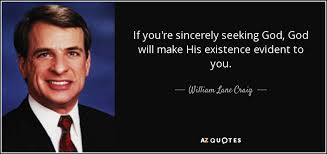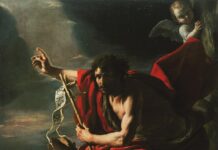William Lane Craig, a world renowned Christian philosopher, theologian and apologist has written many works at the scholarly level. He has tackled deep issues within the philosophy of religion such as arguments for the existence of God, God’s relationship to time, the compatibility of divine foreknowledge with human free will and, most recently, the problem of God’s relation to abstract objects. On the theological side he has dealt heavily with the historicity of Jesus’ resurrection.
He has sought, as C.S. Lewis had put it, to defend a “mere” Christianity, that is, a defense of Christian beliefs and doctrines which are held in common by those who follow Roman Catholicism, Eastern Orthodoxy and Reformed theology. In my estimation he is the greatest defender of the Christian God’s existence, against atheistic polemics, past and present. Even some Catholic philosophers, including Edward Feser, have acknowledged their indebtedness to Craig’s work in abandoning their atheism.
Now addressing a much younger audience, Craig, under the pen name “Dr. Craig”, (a title slightly reminiscent of another children’s author, Dr. Seuss) has written ten books for children under the series title What is God Like?: The Attributes of God for Children. In each of these books he helps both children and parents wrestle with issues revolving around one of ten of God’s attributes, e.g. being all knowing, all loving, all powerful, all good, Trinitarian, eternal, self-sufficient, omnipresent, supremely great and immaterial.
These books are beautifully illustrated and engaging for children. They involve dialogues between a father, mother, son and daughter. Through these dialogues, difficult theological ideas are simplified in a way children and parents without any philosophical or theological training can understand. In one of the titles dealing with God being all-powerful, Dr. Craig carefully explains how this does not entail that God is capable of doing anything. For example, God cannot sin since if He were to sin, He would not be a maximally perfect being, hence not God. Craig also explains that God cannot perform logical contradictions such as making a square in the shape of a circle, since it is impossible for something to be both the shape of a circle and a square at the same time.
In another book which deals with God’s attribute of being all-good, Craig carefully navigates through what philosophers call the Euthyphro dilemma, which finds its source in Plato’s dialogue Euthyphro. In this dialogue, Socrates asks Euthyphro whether something is pious in and of itself, and therefore loved by the gods for being such, or whether something is pious because the gods love it. This dilemma has been transposed into a problematic for Christian theism with respect to the foundation of objective morality. The first horn of the dilemma demonstrates that certain things are right or wrong in and of themselves, independent of God’s command. This horn of the dilemma creates problems with respect to God’s sovereignty and omnipotence, the possibility of morals to be independent from God and, thirdly, God’s freedom. The second horn of the dilemma demonstrates that nothing can be right or wrong outside of God’s command. Obvious problems with this is that God’s goodness is reduced to his will, which suggests that morality is arbitrary.
Following St. Augustine, St. Anselm of Canterbury and St. Thomas Aquinas, Craig argues that the Euthyphro dilemma is a false one since God does not obey a morality outside of Himself, nor does He create morality. Instead of being “created” by God, morality is grounded in God’s very own good nature. Craig explains:
“You’re really thinking hard about this! But those aren’t the only two alternatives,” explained Papa. “God’s very nature is goodness. He is perfect justice, kindness, honesty, love and so on. His commands flow out of His perfectly good nature. So His commands aren’t just made up. But they aren’t based on anything outside of God either. His commands are rooted in His own perfect goodness.”
It is an entertaining way to get children thinking clearly and logically at a very young age.
I have purchased all ten books. I read them regularly with my five year old daughter. My daughter is quite receptive to these ideas and reflects profoundly on them, in particular those relating to the nature of Christ. She has asked the following question: “How can Jesus die, if Jesus is God?” Helping her understand the dual nature of Christ helped clarify how such a thing is even possible. A distinction between the pre-incarnate Christ (the second person of the Trinity) and the incarnate Christ helped bring clarity to the question. The pre-incarnate Christ had only a divine nature, but the incarnate Christ possesses both a divine and a human nature. So, in a sense, it is correct to state that God died – since a divine person actually died on the cross – but that does not entail that God ceased to exist. It is important to realize that in traditional Christianity, death is viewed as the separation of the soul from the body, which is understood to have happened to Christ, who thereby, experienced a disembodied state. However, at the moment of resurrection, Christ’s soul was reunified with his body.
These books are a tremendous resource for stimulating many deep questions for children. One of the books dealing with the Trinity is also valuable for contemporary discussions regarding Islam. It can help children respond to popular Islamic caricatures of the Christian faith. Christian children can then clarify misunderstandings that Muslim friends hold about their faith.
These books also make reference to Scripture when providing responses to questions about the different attributes of God. A memory verse is found at the end of each book.
For older and more advanced children, Craig, has recently written an introductory book on logic: Learning Logic.
The only misgiving I have is that the family depicted in the series comprises a father bear, a mother goose, a boy bear and a girl goose, which does not make much sense from a biological perspective. Nonetheless, these series are a great resource for the emergent Christian youth in defending their faith in a logical, creative and loving manner.
Scott Ventureyra is a PhD Theology candidate at the Dominican University College in Ottawa, Ontario, Canada. His PhD work involves the interaction between science and theology. His thesis research focuses on the Christian conception of God and creation in understanding the origins and emergence of consciousness. His research interests include systematic theology, science & theology, natural theology, philosophical theology and philosophy of mind. He is also a competitive tennis player and instructor.











